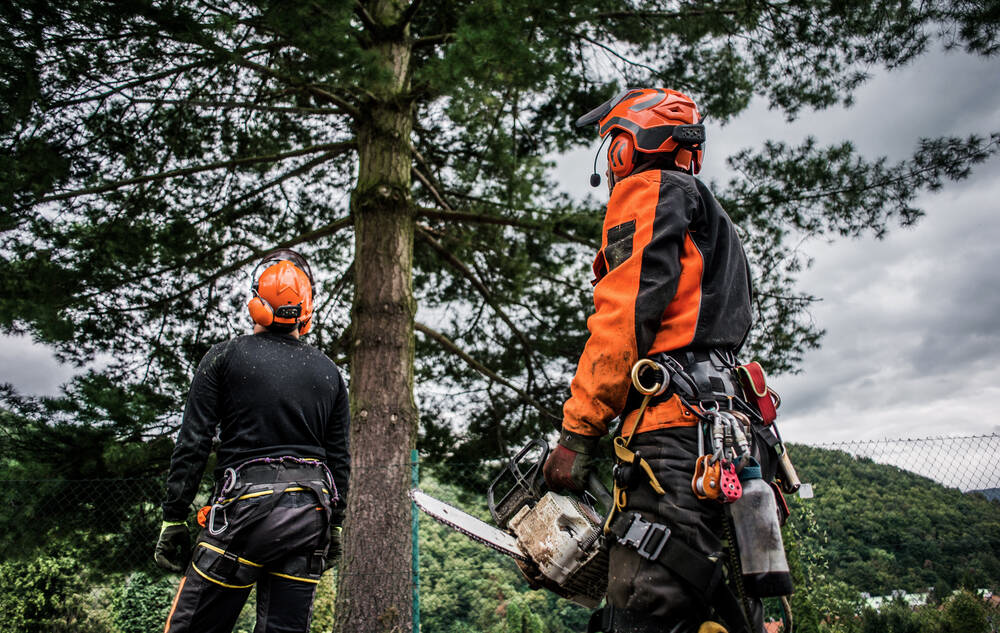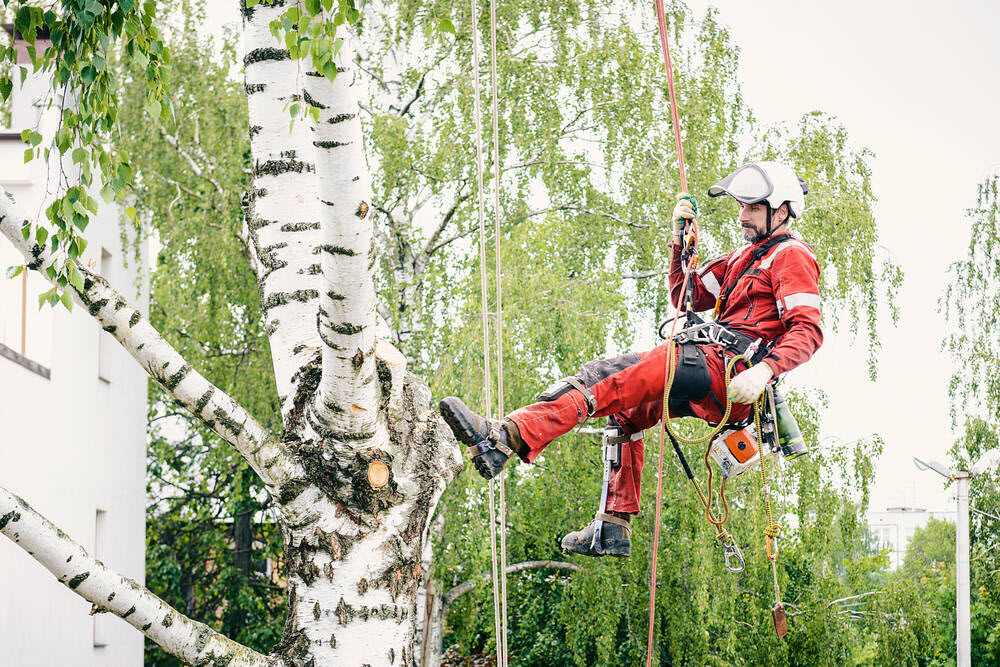An arborist is highly trained in the art and science of planting, caring for, and maintaining trees. They’re knowledgeable about the effects of trees on the environment and how you can use trees to improve the quality of life.

The arborist industry has grown tremendously in recent years. In fact, there are more than 8,444 arborists currently employed in the United States alone. As the demand for tree care professionals increases, so does the need for proper arborist gear. After all, arborists need the right tools and equipment to do their job safely and effectively.
This definitive guide will explain everything you need to know about the essential arborist gear and its functions.
Without further ado, let’s get started.
- Harness
Did you know that the global climbing gear industry is projected to reach USD$2354.3 million by 2026 at a compound annual growth rate (CAGR) of 9.5% during the analysis period? This figure is due to the growing popularity of outdoor activities and the need for proper safety gear, especially harnesses.
A tree climbing harness is a set of straps evenly distributing a person’s weight around their hips and legs. This gear is essential for arborists, as it allows them to ascend and descend trees safely, minimizing the risk of injury.
There are different types of harnesses on the market. Here are a few of the most popular options:
- Full-body: A full-body harness is one of the most common types of a climbing harness. It consists of a waist belt, leg loops, and shoulder straps that all attach to a central point. This harness is comfortable and easy to use, making it ideal for beginner arborists.
- Sit harness: This is similar to a full-body harness but with one key difference: It has a large, padded seat that helps support the arborist’s weight. Sit harness is excellent for those who spend long periods on the tree.
- Chest harness: As the name suggests, this harness attaches around the chest and back rather than the waist. It’s often used in conjunction with another type of climbing harness, such as a full-body or sit harness.
As you can see, there’s a wide variety of harnesses you can choose from, depending on your needs. Ensure to select one that’s durable and fit for the job at hand.
- Spurs
Spikes or spurs are metal attachments that fit onto the arborist’s boots, providing traction when climbing. They typically have one to two sharp spikes that you can use to penetrate the bark of a tree and provide a secure foothold. Without this gear, arborists would have to rely on their hands and feet alone to gain stability, which is dangerous and difficult.
Here’s a quick guide to choosing the right spikes:
- Size: Spurs come in various sizes, so ensure to pick a pair that fits your boots snugly.
- Material: The spurs’ quality will largely depend on the material used in manufacturing. Steel is the most popular option, as it offers durability and strength. On the other hand, aluminum spikes are an excellent choice if you want a lightweight and budget-friendly option.
It’s also worth noting that arborists only use spikes on slated trees for removal, not during regular maintenance. This is to protect the tree from unnecessary damage.

- Climbing boots
If there are spurs, there must be climbing boots too. A pair of climbing boots is vital for anyone working in the tree care industry. This gear protects your feet from getting cut by sharp branches or poked by thorns. Additionally, it keeps your feet warm and dry in wet or cold weather conditions.
When searching for a pair of climbing boots, opt for one that’s:
- Durable
- Comfortable
- Flexible
- Waterproof
- Lightweight
Consider all these factors before purchasing footwear for arboriculture. You’ll spend long hours in it, so it needs to be up for the task.
- Safety glasses
Arborists are exposed to dust, debris, and hazardous chemicals when working. That said, tree care specialists must wear safety glasses to protect their eyes from these dangers. This gear could help reduce the risk of eye injuries, such as corneal abrasion and chemical burns.
A recent report found that the worldwide protective eyewear industry is expected to reach USD$3.1 billion by 2026 at a CAGR of 4.4% during the forecasted period. This growth is primarily attributed to the increasing awareness of eye safety in the workplace, especially for arborists.
While many safety glasses are available, not all of them are created equal. Ensure the eye protector gear you select offer the following:
- Clear vision
- A snug, comfortable fit
- Adequate protection from ultraviolet rays
- Scratch-resistant lenses
It’s crucial to find a balance between protection, comfort, and, more importantly, quality when choosing safety glasses. After all, eyes are delicate, and if the eye gear has poor quality, it can do more harm than good.
- Throw line
You might have heard of throw lines used for emergencies, such as rescuing people from water or fires. Similarly, arborists utilize throw lines to help them get into trees, especially when there’s no lower branch to climb onto.
This gear consists of a rope that’s attached to a weighted object. The arborists throw the weighted thing over a high branch, and the rope unspools, delivering the climbing line to the other side. Then they can use the rope to pull themselves up.
Throw lines are versatile gear that every arborist should have in their toolkit. Not only are they helpful for climbing, rigging, and lowering branches, but they can also be used for camping and hiking.
Conclusion
Arborists need various gear to perform their job well. The highlighted items above are just a few essential tools every tree care expert should have. With the right gear, arborists like you will take on any tree care work safely and efficiently.
